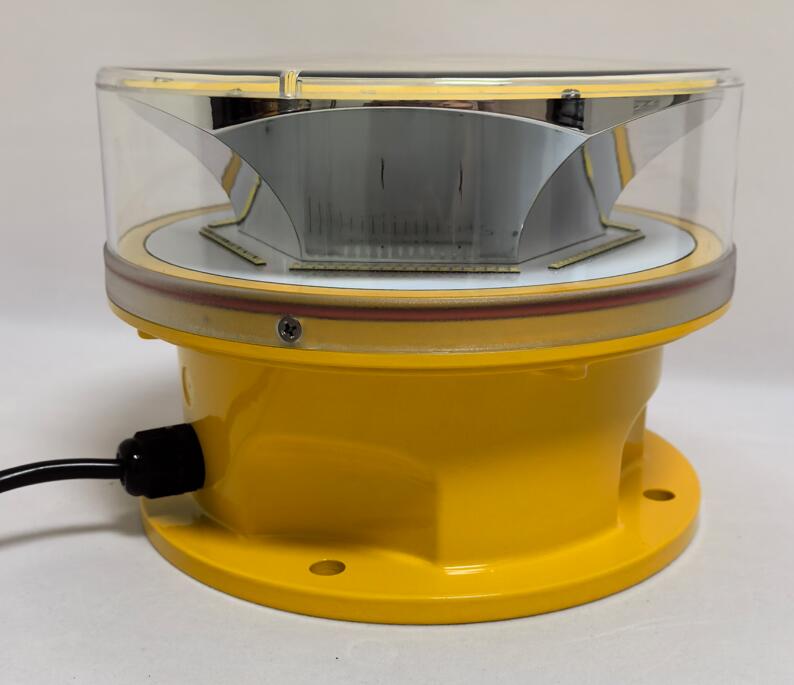Obstruction Light Aviation: The Silent Guardians of Flight Safety
In the vast expanse of the sky, where aircraft navigate through ever-changing conditions, one critical safety feature often goes unnoticed—obstruction light aviation systems. These unassuming yet vital lights serve as beacons, warning pilots of potential hazards and ensuring safe passage through both urban and remote airspaces.
The Critical Role of Obstruction Light Aviation
As air traffic increases and urban landscapes grow vertically, the risk of collisions with tall structures rises. Obstruction light aviation systems are designed to mitigate this risk by making buildings, towers, wind turbines, and other high-rise structures visible to pilots, particularly during nighttime or adverse weather conditions.
Key functions include:
Preventing Collisions – By marking obstacles, these lights help pilots maintain safe distances.

Regulatory Compliance – Aviation authorities worldwide mandate their use on structures exceeding certain heights.
Enhancing Situational Awareness – Consistent lighting patterns allow pilots to quickly identify and avoid hazards.
Types of Obstruction Lights in Aviation
Not all obstruction lights are the same. Their design and application vary based on structure height, location, and aviation regulations. The most common types include:
1. Low-Intensity Obstruction Lights (L-810)
Used for structures under 150 feet (45 meters).
Emit steady red light.
Common on small buildings, cranes, and temporary structures.
2. Medium-Intensity Obstruction Lights (L-864/L-865)
For structures between 150-500 feet (45-150 meters).
| Obstruction Light Aviation |
Available in red (L-864) or white strobe (L-865) variants.
Often installed on telecom towers and mid-rise buildings.
3. High-Intensity Obstruction Lights (L-856/L-857)
Used for structures exceeding 500 feet (150 meters).
Bright white strobes visible for miles.
Typically found on skyscrapers, tall smokestacks, and wind farms.
| Obstruction Lights Aviation |
4. Dual Lighting Systems
Combine red beacons and white strobes for maximum visibility.
Required in high-traffic zones or near airports.
Installation and Compliance Standards
Proper installation and maintenance of obstruction light aviation systems are crucial for reliability. Key considerations include:
Placement – Lights must be positioned at the highest points and spaced to ensure 360-degree visibility.
Power Redundancy – Backup power sources (batteries, solar, or generators) prevent failures during outages.
Synchronization – In multi-light setups, synchronized flashing avoids pilot confusion.
Durability – Weather-resistant materials ensure functionality in extreme conditions.
Regulatory bodies like the FAA (Federal Aviation Administration) and ICAO (International Civil Aviation Organization) set strict guidelines for light intensity, color, and flash rates. Non-compliance can result in penalties and increased accident risks.
Emerging Trends and Innovations
As technology evolves, so do obstruction light aviation systems. Recent advancements include:
LED Adoption – Energy-efficient, long-lasting LEDs are replacing traditional incandescent bulbs.
Smart Monitoring – Remote diagnostics alert operators to malfunctions in real time.
Eco-Friendly Designs – Reduced light pollution and wildlife-friendly wavelengths are gaining traction.
Solar-Powered Solutions – Ideal for remote or off-grid structures.
Challenges and Solutions
Despite their importance, obstruction lights face challenges:
Light Pollution – Bright strobes can disturb residents. Solutions include directional lighting and dimming controls.
Maintenance Accessibility – Tall structures require specialized equipment for repairs. Drones are now being used for inspections.
False Alarms – Birds or insects can trigger light sensors. Advanced filtering systems help reduce false alerts.
Obstruction light aviation systems are indispensable for modern air safety. They silently perform their duty, guiding pilots away from danger and ensuring compliance with international standards. As urbanization and air traffic continue to grow, advancements in lighting technology will further enhance their efficiency and environmental compatibility.
